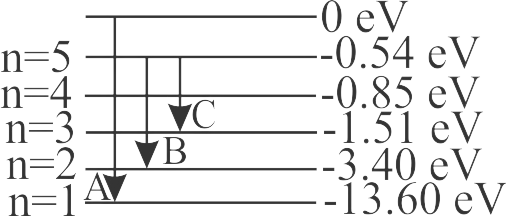356586 A sample of monatomic hydrogen gas contains 100 atoms and all the atoms are in \({n}\)th excited state.As the atoms come down to the ground state following various transitions, they release a total energy of \({\dfrac{4800}{49} R {ch}}\). (where,1 \(Rch\) \({=13.6 {eV}}\)). Find the value of \({N}\), where maximum possible number of photons emitted in the process is \({7 N \times 100}\).
356586 A sample of monatomic hydrogen gas contains 100 atoms and all the atoms are in \({n}\)th excited state.As the atoms come down to the ground state following various transitions, they release a total energy of \({\dfrac{4800}{49} R {ch}}\). (where,1 \(Rch\) \({=13.6 {eV}}\)). Find the value of \({N}\), where maximum possible number of photons emitted in the process is \({7 N \times 100}\).
356586 A sample of monatomic hydrogen gas contains 100 atoms and all the atoms are in \({n}\)th excited state.As the atoms come down to the ground state following various transitions, they release a total energy of \({\dfrac{4800}{49} R {ch}}\). (where,1 \(Rch\) \({=13.6 {eV}}\)). Find the value of \({N}\), where maximum possible number of photons emitted in the process is \({7 N \times 100}\).
356586 A sample of monatomic hydrogen gas contains 100 atoms and all the atoms are in \({n}\)th excited state.As the atoms come down to the ground state following various transitions, they release a total energy of \({\dfrac{4800}{49} R {ch}}\). (where,1 \(Rch\) \({=13.6 {eV}}\)). Find the value of \({N}\), where maximum possible number of photons emitted in the process is \({7 N \times 100}\).

